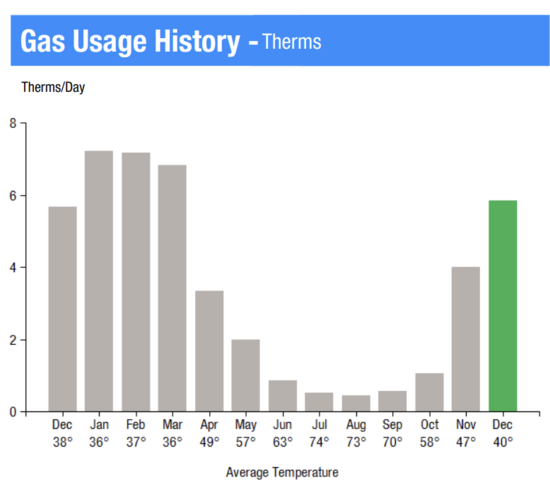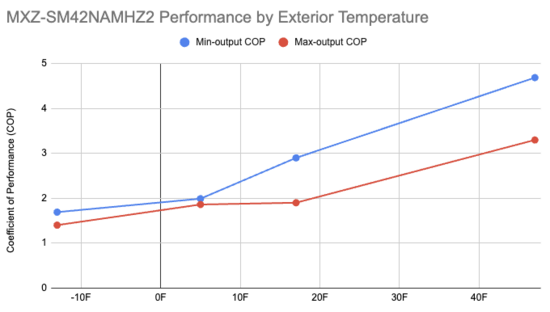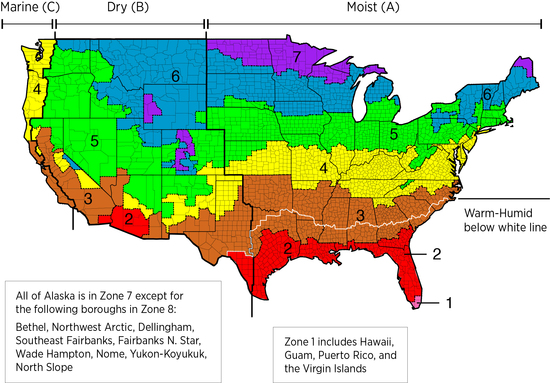Running the Numbers on a Heat Pump |
February 8th, 2024 |
| house, money |
I got excited about a potential heat pump system after learning that over the past few years their cold-weather performance has improved dramatically and then that MA would provide a $20k subsidy ($10k for each of two units) for us to switch over. I liked that it would allow us to adjust the level of heating we had in each room, provide heat to one room that currently is only heated passively through the walls, replace the small amount of resistive heat we use in another room, and provide cooling (where we currently use a whole-house fan, plus window units during the hottest part of the summer). Friends who had installed them were happy, and then I found someone putting together a buying collective to negotiate pricing. I got a MassSave energy audit, to qualify for the $20k rebate, talked to the contractor (great experience!) and got a quote. Since it was a lot of money I wanted to run the numbers first, and then that's when my excitement drained.
The quote was for Mitsubishi MXZ-SM42NAMHZ mini-split condensers, which are pretty efficient, and have a Region IV [1] HSPF2 rating of 10.55 (10,550 BTU/kWh) [2] . This means that averaging over the heating season, to produce 100k BTU of heat we'd need 9.48 kWh of electricity. Burning one therm of natural gas also gives you 100k BTU, but our condensing boiler is rated 96% efficient so we'd need 1.04 therms for that 100k BTU.
Massachusetts has some of the highest energy costs in the country, and our marginal costs are $1.999/therm [3] for gas and $0.316/kWh for electric. That means heating our house by 100k BTU would cost $2.08 with gas vs $3.00 for electric (44% more). What's the scale of this?
In 2023 we burned 1,199 therms of natural gas. During the summer when the heat was off we burned ~16 therms a month, for hot water, so I'll estimate we used 1,007 therms for heating and 192 for hot water.
Doing the same calculation for more years, it sounds like 1,000 therms is typical:
| Year | Therms | Heating Therms |
|---|---|---|
| 2023 | 1,199 | 1,007 |
| 2022 | 1,146 | 954 |
| 2021 | 1,182 | 990 |
This means we'd be paying another $900/year in operating costs, let alone the cost of the installation. I'd also predict the maintenance costs would be higher, since there are a lot more moving parts to break.
Now, one thing some people will recommend is to run the heat pump most of the time, and fall back to gas for the coldest part of the year. The heat pump uses electricity roughly in proportion to how much colder it is outside than inside:
This shows the Coefficient of Performance (COP): how many kWh of heat do you get out for each kWh of electricity you put in. At our current electricity and gas prices, we'd break even at a COP of 4.45. Interpolating between the minimum-output performance at 47F and 17F, since in warm weather we wouldn't full system capacity, break-even is at temperatures of 43F and above. So we could run gas when it's colder than that, and the heat pump when it's warmer. But (a) running the system only when it was 43F+, but that's only a small portion of the heating season, and (b) to get the $20k rebate you need to permanently disable your existing heating system [4].
I was pretty surprised (and disappointed) when I went through this. Polling housemates around the dinner table the guesses I got for the operating cost were around a 25% to 50% decrease. I'd thought that this was more like solar panels or electric cars: more money up front, but savings over time.
One thing to keep in mind, though, is that even though the electricity here is mostly produced by burning gas you do actually burn less gas by turning it into electricity and then using it to run a heat pump than just burning it for heat. Even if the marginal electricity here were 100% gas, the plants are about 60% efficient and the COP averaged over the season is 3.09 [2], so when we combine these we get 53% as much gas when using the heat pump. Still, if the system were free (which it's definitely not!) this would come to $900/y to save ~3.2T CO2e, or $281 a ton. This is above the social cost of carbon, and even above what direct air capture would cost. If I wanted to spend money to reduce carbon emissions this wouldn't be the place to start.
If this is so expensive, who does it make sense for around here? If you have oil heat, and especially if you have an older less-efficient boiler, then it could save you quite a bit. A gallon of heating oil is 138.5k BTU, and around here costs $4.05, so if your boiler is 80% efficient you're paying $3.66 per 100k BTU, 22% more than I estimated for a heat pump above. And it's even worse for propane, with a similar cost per gallon but only 2/3 the energy density. People who need to heat varying portions of their house but don't have matching heating zones would also benefit from a mini-split system like we were considering. And the tradeoffs are also different in other parts of the country: if it's warmer or your electricity is cheaper relative to your gas it can be a good deal. Additionally you might expect the cost of gas to rise relative to electricity during the life of the system.
The bottom line for us is that we'll stick with our forced hot water natural gas heat for now, and revisit if costs change dramatically. But I will get someone out to tweak the current system so that we're not overheating any of the rooms.
[1] Unfortunately what I really want is the Region V rating, since
Boston is
in Region V:
On the other hand, Somerville is a heat island, so it's probably not that bad to be using the Region IV rating.
[2] This is a bit silly units-wise: Wh and BTU are both measures of energy (1 BTU = 0.293 Wh) so I think we could just say the average coeficient of performance is 3.09 (10.55 BTU converted to Wh). But let's ignore this.
[3]] This is suspiciously round, though it divides as:
| Charge | Per-therm |
|---|---|
| Generation Service Charge | $0.768 |
| Distribution Charge | $0.6674 |
| Revenue Decoupling Charge | $0.0603 |
| Distribution Adjustment Charge | $0.5033 |
[4] This is new for 2024, but it's not as strict as it sounds: per the guidelines (pdf) it counts if "pre-existing thermostat(s) have been disconnected from both the system board and walls," and there's nothing stopping you from putting them back again later.
Comment via: facebook, lesswrong, mastodon


